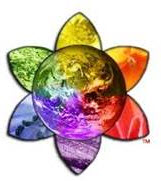PRINCIPLES OF SPIRITUAL ACTIVISM

One way of summarizing the Principles of Spiritual Activism is to simply say that in deciding how to address every challenge we face – individually and collectively – we are always offered the opportunity to choose between reacting in fear or responding through love.
This mash up video of Bill Hicks and George Carlin lays that choice before us beautifully:
The Big Electron (2:28)
Whether consciously or unconsciously, all of us who are participating in the Peace and Justice Movement, the Ecology Movement, the 9/11 Truth movement and various other progressive efforts, are actually playing our part in a much larger process. We could perhaps accurately name this movement “The Global Oneness Project“. In fact, that is what some folks have done and you can get a glimpse of their work and vision in their Global Oneness Project video. Or more succinctly this vision of global unity, and the pathway to it, is offered here:
“Everything is Connected” (1:00)
However, in order to achieve this larger vision – the realization of Global Unity – we will need not only lofty goals, but also skillful means. To be ultimately effective, our means must reflect their goal and be consistent with it. That of course is why our team doesn’t get to lie, cheat, steal and murder! That approach just won’t get us where we want to go. More subtly however, it is time we all give careful consideration to the attitudes of heart and mind that we are bringing to our peace movement work. How do we think about, speak about, and act towards both our allies and our opponents?
I believe that the success of our movement will depend on our mastery of the Principles of Spiritual Activism, so remarkably well articulated by the Satyana Institute: http://www.satyana.org. These Universal Laws must govern any movement that strives for fundamental political/social/cultural change, if it wishes to be truly effective. Thus I encourage you to investigate these principles as they are articulated below and then to incorporate them into all of your evolving political action.

Principles of Spiritual Activism
(excerpted from http://www.satyana.org/principles_new.html)
The following principles emerged from several years’ work with social change leaders in Satyana’s Leading with Spirit program. We offer these not as definitive truths, but rather as key learnings and guidelines that, taken together, comprise a useful framework for “spiritual activism.”
- Transformation of motivation from anger/fear/despair to compassion/love/purpose. This is a vital challenge for today’s social change movement. This is not to deny the noble emotion of appropriate anger or outrage in the face of social injustice. Rather, this entails a crucial shift from fighting against evil to working for love, and the long-term results are very different, even if the outer activities appear virtually identical. Action follows Being, as the Sufi saying goes. Thus “a positive future cannot emerge from the mind of anger and despair” (Dalai Lama).
- Non-attachment to outcome. This is difficult to put into practice, yet to the extent that we are attached to the results of our work, we rise and fall with our successes and failures—a sure path to burnout. Hold a clear intention, and let go of the outcome—recognizing that a larger wisdom is always operating. As Gandhi said, “the victory is in the doing,” not the results. Also, remain flexible in the face of changing circumstances: “Planning is invaluable, but plans are useless.”(Churchill)
- Integrity is your protection. If your work has integrity, this will tend to protect you from negative energy and circumstances. You can often sidestep negative energy from others by becoming “transparent” to it, allowing it to pass through you with no adverse effect upon you. This is a consciousness practice that might be called “psychic aikido.”
- Integrity in means and ends. Integrity in means cultivates integrity in the fruit of one’s work. A noble goal cannot be achieved utilizing ignoble means.
- Don’t demonize your adversaries. It makes them more defensive and less receptive to your views. People respond to arrogance with their own arrogance, creating rigid polarization. Be a perpetual learner, and constantly challenge your own views.
- You are unique. Find and fulfill your true calling. “It is better to tread your own path, however humbly, than that of another, however successfully.” (Bhagavad Gita)
- Love thy enemy. Or at least, have compassion for them. This is a vital challenge for our times. This does not mean indulging falsehood or corruption. It means moving from “us/them” thinking to “we” consciousness, from separation to cooperation, recognizing that we human beings are ultimately far more alike than we are different. This is challenging in situations with people whose views are radically opposed to yours. Be hard on the issues, soft on the people.
- Your work is for the world, not for you. In doing service work, you are working for others. The full harvest of your work may not take place in your lifetime, yet your efforts now are making possible a better life for future generations. Let your fulfillment come in gratitude for being called to do this work, and from doing it with as much compassion, authenticity, fortitude, and forgiveness as you can muster.
- Selfless service is a myth. In serving others, we serve our true selves. “It is in giving that we receive.” We are sustained by those we serve, just as we are blessed when we forgive others. As Gandhi says, the practice of satyagraha (“clinging to truth”) confers a “matchless and universal power” upon those who practice it. Service work is enlightened self-interest, because it cultivates an expanded sense of self that includes all others.
- Do not insulate yourself from the pain of the world. Shielding yourself from heartbreak prevents transformation. Let your heart break open, and learn to move in the world with a broken heart. As Gibran says, “Your pain is the medicine by which the physician within heals thyself.” When we open ourselves to the pain of the world, we become the medicine that heals the world. This is what Gandhi understood so deeply in his principles of ahimsa and satyagraha. A broken heart becomes an open heart, and genuine transformation begins.
- What you attend to, you become. Your essence is pliable, and ultimately you become that which you most deeply focus your attention upon. You reap what you sow, so choose your actions carefully. If you constantly engage in battles, you become embattled yourself. If you constantly give love, you become love itself.
- Rely on faith, and let go of having to figure it all out. There are larger ‘divine’ forces at work that we can trust completely without knowing their precise workings or agendas. Faith means trusting the unknown, and offering yourself as a vehicle for the intrinsic benevolence of the cosmos. “The first step to wisdom is silence. The second is listening.” If you genuinely ask inwardly and listen for guidance, and then follow it carefully—you are working in accord with these larger forces, and you become the instrument for their music.
- Love creates the form. Not the other way around. The heart crosses the abyss that the mind creates, and operates at depths unknown to the mind. Don’t get trapped by “pessimism concerning human nature that is not balanced by an optimism concerning divine nature, or you will overlook the cure of grace.” (Martin Luther King) Let your heart’s love infuse your work and you cannot fail, though your dreams may manifest in ways different from what you imagine
© Satyana Institute on the Principles of Spiritual Activism
These 13 principles are a lot to contemplate. But ultimately they come down to the choice we must make in each moment, in every other aspect of our lives, as we seek to be effective change agents – the choice between fear and love. Thus to close this introduction to “The Big Picture”, here is a video review of that choice:
Click to see Our Choice (Temporarily Unavailable)
Where do we go from here?
Once we are grounded in a fundamental appreciation of “The Big Picture”, the question naturally arises “Now what?!” The way out of The Real Matrix begins by unearthing the Truths that its lies have been orchestrated to obscure. In modern times no greater web of lies has ever been woven then that of the great 9/11/01 myth. If you choose to deepen your understanding of the events of 9/11/01, you are invited to tour Imagine Peace and Plenty’s investigation of that tragic day at our sister site: “9/11 Inquiry”. In addition to essential information, you will find suggestions there for action steps you can take right away to press our nation into a more trustworthy and determined investigation of the 9/11/01 attacks.
In addition to further investigating the events of 9/11/01, please also link to Imagine Peace and Plenty’s focus on these related arenas of urgent and critical concern that our collective human community faces – Global Climate Change, Rainforest Preservation and the search for Lasting Peace and Plenty for All. When you are ready to engage more actively in addressing any or all of these, simply link to the “Take Action” portions of this site. And if you have not done so already, be sure to sign up for the Peace and Plenty Newsletter mailings.
If, as suggested earlier, you are exploring the “Imagine Peace and Plenty” website in the same manner that you would read a novel, link here to the next chapter’s preamble – the “Reality Check Box” – found on the Imagine Peace and Plenty home page.



